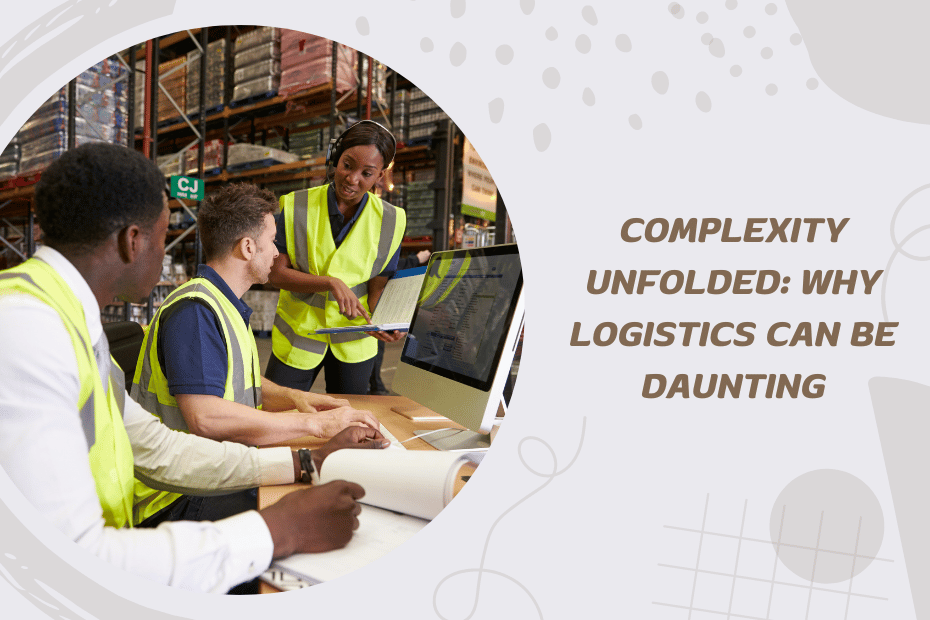Logistics, a critical function in modern business, involves a complex network of processes to ensure products move smoothly from suppliers to consumers. Despite its importance, logistics can be incredibly daunting due to various challenges. This article explores why logistics is so complex, highlighting key issues and offering insights into potential solutions. By understanding these complexities, businesses can develop strategies to enhance efficiency, reduce costs, and improve customer satisfaction. The discussion will cover rising customer demands, global supply chains, technological integration, workforce management, regulatory compliance, supply chain visibility, sustainability pressures, and data management.
Customer Demands and Expectations
Customer expectations have skyrocketed in recent years, adding significant complexity to logistics operations. Customers now demand faster delivery times, real-time tracking, and personalized services. This has led companies to implement advanced technologies and streamline their processes to meet these demands. However, balancing speed, accuracy, and cost-effectiveness is a continuous challenge. Businesses must invest in sophisticated order management systems and maintain flexible logistics strategies to adapt to varying customer requirements. For example, e-commerce giants like Amazon have set high standards for quick delivery, pushing other companies to enhance their logistics capabilities to remain competitive.
Globalization of Supply Chains
Globalization has expanded the reach of supply chains, but it has also introduced new layers of complexity. Managing logistics across different countries involves dealing with diverse regulations, customs procedures, and cultural differences. Companies must navigate these challenges while ensuring timely deliveries and maintaining product quality. Effective management of global supply chains requires robust planning, reliable partners, and advanced tracking systems to monitor the movement of goods and address any disruptions promptly. For instance, automotive companies like Toyota must manage a vast network of suppliers and manufacturing plants across the globe, ensuring components arrive on time for assembly.
Technological Integration
The integration of new technologies into logistics operations offers numerous benefits, including improved efficiency and visibility. However, implementing these technologies can be daunting due to the significant investment required and the potential cybersecurity risks. Technologies such as artificial intelligence (AI), blockchain, and the Internet of Things (IoT) can streamline operations but also require robust cybersecurity measures to protect sensitive data. AI can enhance demand forecasting and route optimization, while blockchain provides secure and transparent transaction records. To successfully integrate these technologies, companies must ensure compatibility with existing systems and provide adequate training for employees.
Workforce Management
The logistics industry is facing a critical shortage of skilled labor, particularly truck drivers and warehouse workers. This shortage is exacerbated by an aging workforce and the industry’s struggle to attract younger workers. To address this issue, companies can invest in training programs, offer competitive wages and benefits, and leverage automation to supplement human labor. Developing a positive work environment and providing opportunities for career advancement can also help attract and retain talent. For example, logistics firms can partner with educational institutions to create specialized training programs that prepare individuals for careers in logistics.
Regulatory Compliance
Navigating the complex landscape of local, national, and international regulations is another significant challenge in logistics. Compliance with various regulations can be time-consuming and costly. Non-compliance can result in fines, operational disruptions, and damage to a company’s reputation. To ensure compliance, companies must stay informed about regulatory changes, invest in compliance management systems, and provide regular training for their staff. Proactively managing compliance helps avoid legal issues and ensures smooth operations. For example, companies involved in international trade must comply with customs regulations, tariffs, and trade agreements, which can vary significantly across regions.
Supply Chain Visibility
Ensuring end-to-end visibility across the supply chain is crucial for making informed decisions and responding swiftly to disruptions. Poor visibility can lead to inefficiencies, increased costs, and missed opportunities. Implementing advanced tracking systems and visibility tools can provide real-time insights into the location and status of shipments, enhancing coordination and reducing uncertainties. Technologies such as digital twins and IoT devices enable real-time monitoring and analysis, helping companies anticipate and mitigate potential disruptions. Improved supply chain visibility leads to better inventory management, optimized operations, and increased customer satisfaction.
Sustainability Pressures
Sustainability is becoming a critical focus in logistics as companies face increasing pressure to reduce their environmental impact. Implementing sustainable practices involves using eco-friendly vehicles, optimizing delivery routes, and adopting green packaging solutions. Companies can also invest in renewable energy sources and energy-efficient technologies to reduce their carbon footprint. Balancing sustainability with operational efficiency and profitability is challenging, but essential for meeting regulatory requirements and satisfying environmentally conscious consumers. For example, logistics companies like DHL and UPS are investing in electric and hybrid vehicles to reduce emissions and meet sustainability goals.
Data Management and Integration
Managing and integrating vast amounts of data from various sources is a complex challenge in logistics. Accurate and consistent data is essential for effective decision-making, inventory management, and demand forecasting. However, data silos, where information is stored in separate systems that do not communicate with each other, can hinder these processes. Investing in integrated data management solutions, such as cloud-based systems and predictive analytics, can help companies manage data more efficiently, improve collaboration across departments, and enhance overall logistics operations. For example, integrating data from warehouse management systems, transportation management systems, and order management systems provides a comprehensive view of logistics operations, enabling better coordination and decision-making.
In Conclusion
Logistics is inherently complex, with numerous challenges that can make it a daunting task for businesses. From rising customer expectations and global supply chains to technological integration and regulatory compliance, each aspect requires careful planning and management. By understanding these complexities and implementing effective strategies, companies can navigate the logistics landscape successfully. Leveraging advanced technologies, investing in workforce development, and prioritizing sustainability will help businesses overcome these challenges and achieve operational excellence.

